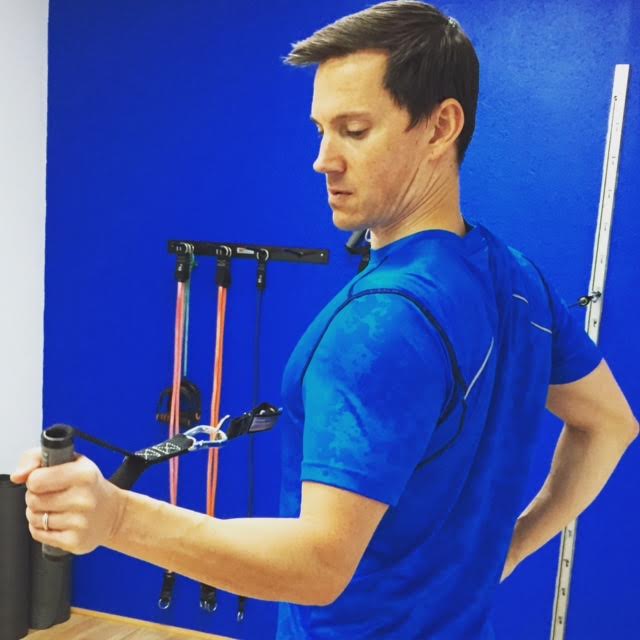The Importance of Strengthening Rotator Cuff Muscles
The shoulder joint is unlike most joints in the body because it’s primarily supported by muscle. Unlike the hip joint with its large ball and socket of bone and cartlilage, the shoulder joint has a shallow ball and socket and relies on muscle to stabilize it and keep it in place, especially during motion. Every joint in the body does receive support from surrounding muscle tissue but the shoulder joint REALLY relies on surrounding muscle tissue for joint support.
The best way to promote shoulder joint stability is not through traditional primary mover focused exercises like chest press (for pecs), lat pull down (for back) or overhead press (for shoulders) where the rotator cuff is used as a secondary stabilizer. The rotator cuff gets the most benefit from rowing type resistance training exercises (high rows down to low row motions in front of the body) and rotator cuff exercises where it’s directly worked and encourages use of muscles that center the joint. This does not only apply to the person that has a history of rotator cuff problems. Whether you have had a shoulder issue or not, incorporating rowing exercises and rotator cuff exercises as part of a regular exercise routine encourages healthy shoulders, optimal posture and injury prevention.
When a workout program doesn’t include enough rowing exercises and rotator cuff exercises, the rotator cuff will be left weak and vulenrable. This strength imbalance leaves the rotator cuff susceptible to injury. Unfortunately, I’ve had a lot of new client inquires over the years from individuals who have injured themselves because they made this very mistake. Working muscles to the front of the body (like pecs and biceps), without balancing the body with strength to the rotator cuff and muscles to the back of the body, pulls the shoulder joint forward and creates tracking and postural issues that impact the health of the joint negatively over time.
The best approach when beginning an exercise program is to immediately include rotator cuff exercises and stretches as part of the exercise routine. Low row and high row variations during back workouts should be an emphasized part of most exercise programs. Serratus anterior exercises should be included as they help stabilize the lower part of the scapulae to the body which help prevents winging. It is a costly mistake to get injured first, then add the correct exercises to a program, when these exercises could have prevented the injury altogether.
For those who have already achieved an advanced state of fitness, rotator cuff exercises and stretches make great warm up exercises for any upper body workout. They prepare the shoulder by warming up the tissue, making the rotator cuff less susceptible to injury, and engaging the muscles so they are ready to do their job of shoulder joint stabilization.
When it comes to lifelong health and fitness, it’s not about the beach muscles. Lifelong fitness includes attention to your body as a whole, including conditioning the little muscles, such as rotator cuff and postural muscles that set you in a strong neutral position, give you joint support and a healthy frame.


